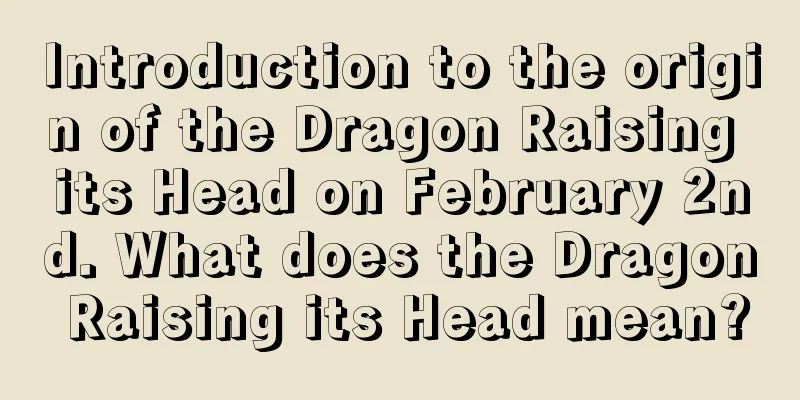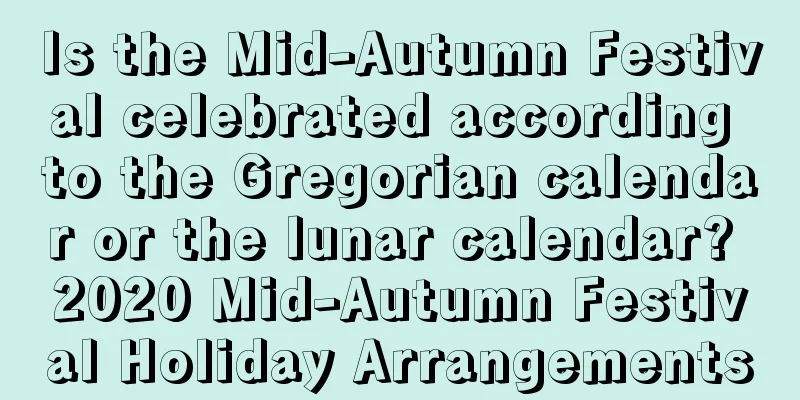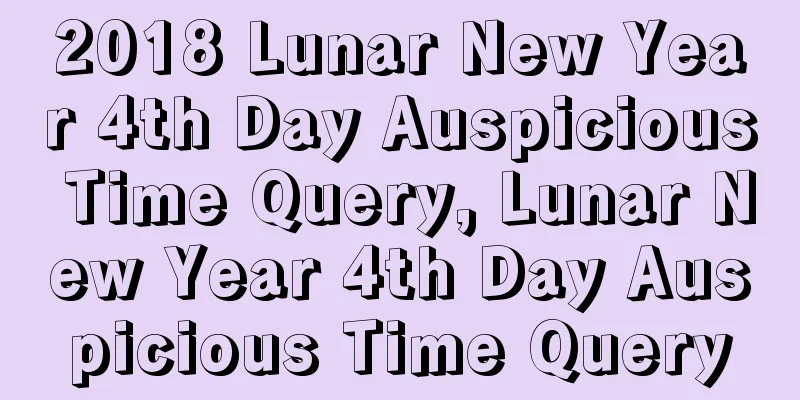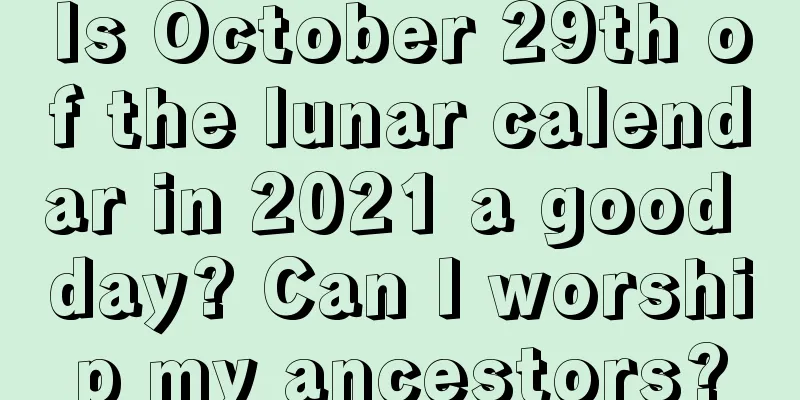Introduction to the origin of the Dragon Raising its Head on February 2nd. What does the Dragon Raising its Head mean?

Every festival and solar term has a history. Let’s take a look at the origin of the Dragon Raising its Head on February 2. As we enter the second month of the lunar calendar, the weather begins to gradually warm up and everything becomes full of life. Various articles on Shuimoxiansheng.com’s special topic for February 2021 of the lunar calendar have been updated, so stay tuned!Introduction to the Origin of the Dragon Raising its Head on February 2The folk saying about the Dragon Raising its Head on February 2:In northern my country, there is a widely circulated folk legend: On the second day of the second month of the lunar calendar, the Dragon King, who is in charge of clouds and rain in the sky, raises his head; from then on, the rainfall will gradually increase. Therefore, this day is called "Spring Dragon Festival". There is a widely circulated folk proverb in northern China: "On the second day of the second month, the dragon raises its head; the big warehouses are full, and the small warehouses flow." According to folklore, the dragon opens its eyes on the first day of February, raises its head on the second day, and sweats on the third day. At this time, the women in charge of the family are busy preparing to help everyone in the family, young and old, get dressed for winter before the first day of February. According to old customs, people are not allowed to do any work or use scissors, needles or thread from the first to the third day of the Chinese New Year. Kind women, especially the elderly ladies, shouted and threatened everyone in the family not to touch knives or scissors in the first few days. They even put away a pile of taboo things without telling the old and young in the family. The astronomical explanation for the Dragon Raising its Head on February 2: The origin of the dragon raising its head is related to ancient astronomical phenomena. Ancient Chinese astronomy determined the ecliptic to be divided into 28 constellations, which are called the "Twenty-Eight Mansions". The ancients divided these 28 constellations into four palaces according to the east, south, west and north, with 7 constellations in each palace, and described the four palaces as four mythical beasts according to their images: "Qinglong, Baihu, Zhuque and Xuanwu." The "dragon" mentioned in the Dragon Raising its Head refers to the seven eastern blue dragons of the twenty-eight celestial constellations. There are two stars on the "Spica" on the head of the Canglong: Spica I and Spica II, representing the two horns on the head of the Canglong. The four stars after "Jiao Su" are "Kang Su", which is the throat of the dragon. Below the throat there are four stars arranged in the shape of a winnowing basket, which is "Di Su", representing the claws of the dragon. The Fang, Xin, Wei and Ji stars behind the dragon's claws represent the dragon's heart and tail respectively. What does the dragon raising its head mean?The saying "Dragon raising its head" comes from ancient astronomy. In ancient times, people chose 28 groups of constellations near the ecliptic equator as coordinates to use as reference for observing celestial phenomena. The ancients divided the constellations near the ecliptic into 28 groups based on the orbits and positions of the sun, moon and stars, commonly known as the "28 Mansions". "宿" means to live. Because they are arranged in the four directions of the sun, the moon and the five planets, and look very much like the places where the sun, the moon and the five planets reside, they are called "Su".The "Twenty-Eight Mansions" are divided into four major groups according to the four directions of east, west, south and north, producing the "Four Symbols": Azure Dragon in the East, White Tiger in the West, Vermillion Bird in the South and Black Tortoise in the North. The seven constellations in the east are called "Jiao, Kang, Di, Fang, Xin, Wei and Ji". The seven constellations form a complete dragon-shaped constellation, and people call it the "Eastern Blue Dragon". Among them, Jiao represents the dragon's horns, Kang represents the dragon's throat, Di represents the dragon's claws, Xin represents the dragon's heart, Wei and Ji represent the dragon's tail. In winter, the seven stars of the Azure Dragon disappear below the northern horizon. Between the Waking of Insects and the Spring Equinox, the Jiao Constellation (one and two Jiao Constellations) appear on the eastern horizon. At this time, the entire body of the Azure Dragon is still hidden below the horizon, and the Jiao Constellation is just beginning to appear, so it is called "the dragon raising its head." The Dragon Raising its Head refers to the appearance and disappearance of the stars of the Blue Dragon in the sky, not that there is really an animal dragon changing. |
<<: Can I get a hair cut on February 2, 2021? What are the precautions for cutting baby’s hair?
>>: Can I travel on February 2, 2021? How auspicious or inauspicious is the time of day?
Recommend
Is April 20th of the lunar calendar in 2017 a good day to get married?
Introduction: Marriage is one of the major events ...
The auspicious and inauspicious times of the sixth day of the sixth lunar month in 2020
The lotus leaf skirt is cut in one color, with hi...
Is October 15th of the lunar calendar 2020 a good day? Is it suitable for going out?
Is October 15th of the lunar calendar 2020 a good ...
Is it a good day to travel on the 15th day of the first lunar month in 2019?
The fifteenth day of the first lunar month is the ...
Analysis of the fate of boys born on the ninth day of the tenth lunar month in 2022!
A person's destiny has a lot to do with his or...
What is the fate of the ninth month of the lunar calendar in 2020? The fate of men born in the ninth month of the lunar calendar
What is the fate of the ninth month of the lunar c...
What is the saying about marriage in leap April 2020, and what are the forms of marriage?
The common form of modern marriage is monogamy, on...
Is July 12, 2019 a suitable date to pick up a new car?
What kind of day is the twelfth day of the sevent...
Is the lunar calendar for the 18th day of the sixth lunar month in 2017 good? Is the day suitable for decoration?
Introduction: Daily work and study bring fatigue t...
Is it good for a girl to be born on National Day on the sixth day of the ninth lunar month in 2022? How is fate?
Is it good for a girl to be born on National Day o...
Is it a good idea to open on the 11th day of the first lunar month in 2018? What should you pay attention to when opening a business?
Introduction: The purpose of opening a store is to...
Should I give gifts to my elders at home during the Little New Year? What's the point?
Introduction: Giving gifts to elders is a sign of ...
Is the 28th day of the first lunar month in 2020 February 21st? What is the zodiac sign of the baby born?
The lunar calendar and the Gregorian calendar are ...
How should a child born on Qingming Festival in 2018 whose five elements lack water be named?
Introduction: Every child has a unique name after ...
Is February 24th of the lunar calendar in 2022 an auspicious day for signing a contract? What should I pay attention to when signing a contract?
The second month of the lunar calendar is also cal...









